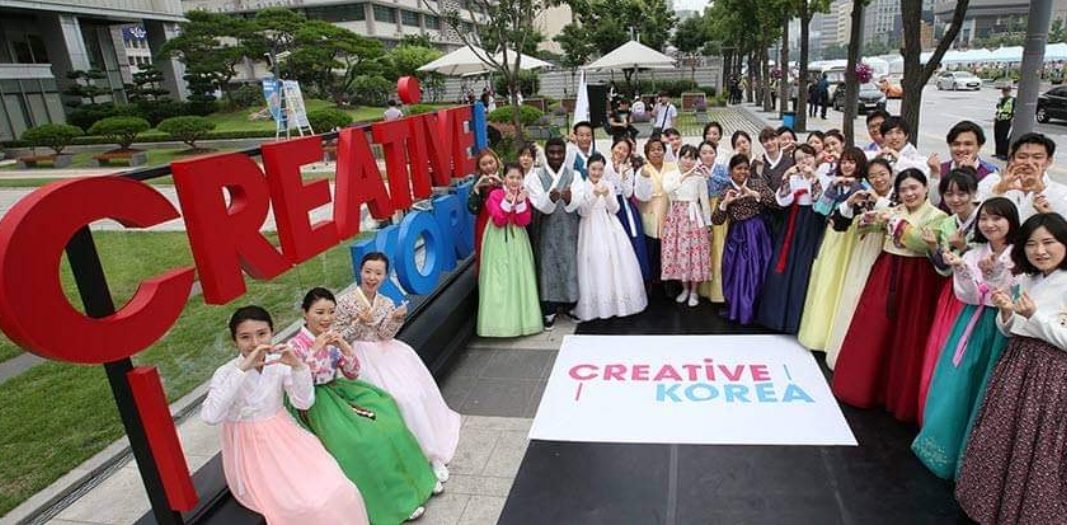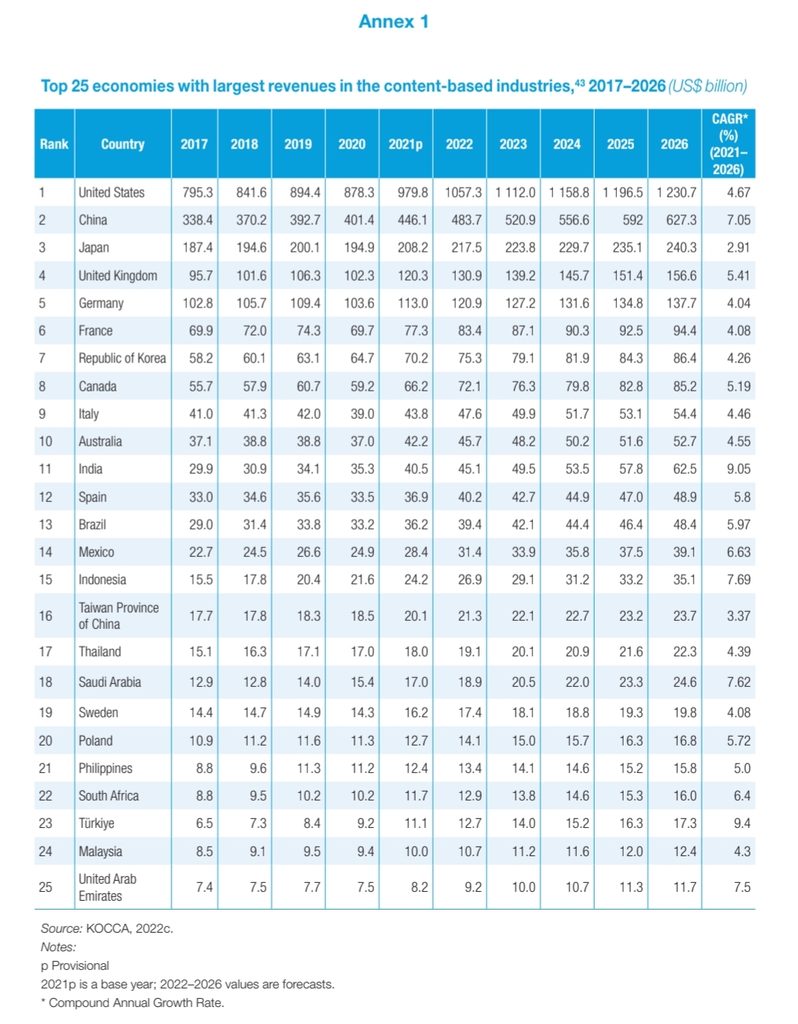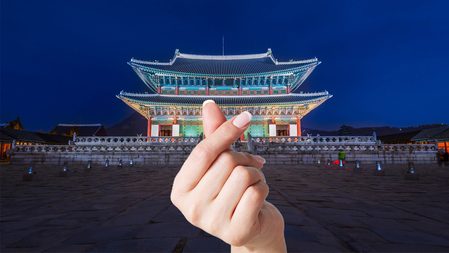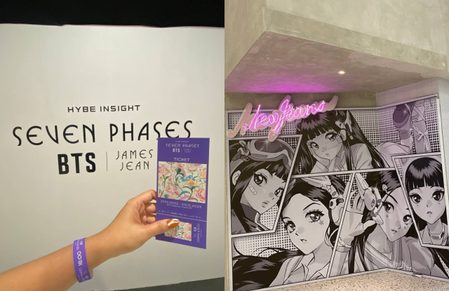SUMMARY
This is AI generated summarization, which may have errors. For context, always refer to the full article.

MANILA, Philippines – A recent study by the United Nations Conference on Trade and Development (UNCTAD) has cited the importance of freedom of expression and copyright protection as factors behind the Korean Wave, also known as Hallyu.
In its report “K-Content goes global: How government support and copyright policy fuelled the Republic of Korea’s Creative Economy,” published on March 21, UNCTAD said that a “noteworthy feature” of Korea’s recent cultural policy “is the reduction in censorship, quotas, and restrictions on imports.”
Quoting Hye-Kyung Lee, a senior lecturer at the Department of Culture, Media and Creative Industries in King’s College London, United Kingdom, UNCTAD said “freedom of expression and democracy is a requirement for the dynamic creativity that led to the Korean Wave.”
It cited the following policy developments:
- 1988 to 1993: Restrictions on key sectors of the creative industries – publishers, theater, film – were removed or reduced.
- 1993 to 1998: The Korean government continued the policy of ending censorship, “which allowed creative producers to explore new forms and diversify their cultural outputs.”
- 1993-2003: The government passed several laws that “clearly indicated a shift in the government’s stance on cultural policy from regulation and control to promotion.”
“Through this process, cultural freedom, which had initially emerged as a political issue, became a pre-requisite of consumer society and a baseline of cultural promotion policy,” UNCTAD said, quoting Lee.
The report said K-Content comprises 11 areas:
- publishing
- comics
- music
- games
- film
- animation (motion picture)
- broadcasting
- advertisement
- characters
- knowledge information
- content solutions.
A survey by Korea’s Ministry of Culture, Sports, and Tourism (MCST) showed the content-based industry of South Korea generating $108 billion in sales, growing at 4.9% a year from 2016 to 2020.
Among the examples of K-Content cited in the report are:
- 2020 Oscars Best Picture Parasite

- Netflix’s Squid Game 2021 drama

- K-Drama: Winter Sonata, What is Love, Itaweon Class, True Beauty, Extraordinary You
- Psy’s Gangnam Style song and video
UNCTAD said that due to the popularity of K-content, the number of Hallyu-related groups is increasing by 7% per year and the number of members by 36% per year.
Citing the official government site korea.net, UNCTAD said, “Most of organizations consist of K-pop fan clubs such as ARMY (BTS’s global official fan club) and BLINK (BLACKPINK’s official fan club) although there are other cultural communities such as those following Korean drama, food, and tourism.”
UNCTAD said the main success factors in driving the popularity of Korean wave are creativity and uniqueness of K-Content which appeal worldwide.
In music or K-pop, it noted the role of Korea’s entertainment agencies in “casting and training potential idol groups to producing music and promotion for the global markets.”
“For example, the agencies focus on discovering ‘hidden gems’ with great potential and investing in their long-term development and training to enable them to debut as K-pop idols. K-pop idols attract audiences worldwide with appealing melodies and synchronized group dance,” the report said.
In K-drama, the “themes are often universal in nature with simple storylines, while reflecting a wide range of complex human emotions, and employing new and innovative plotlines that are highly captivating to all.”

The report said the rapid growth of mobile technologies and social media since the mid-2000s was a “decisive factor for the global expansion of K-content.” These “reduce the costs and time needed for overseas expansion,” and enable “fans to help spread content easily,” UNCTAD said, citing a study by four Koreans on the K-pop industry.
The study, “Success Factors and Sustainability of the K-Pop Industry: A Structural Equation Model and Fuzzy Set Analysis,” was funded by the Korean government with a grant from the National Research Foundation of Korea.
Soft power
UNCTAD said the Korean Wave has strengthened the “brand power” of Korea, leading to expansion in other cultural areas.
“As K-pop, K-drama and films continue attracting people around the world, the Korean wave is expanding into other cultural areas such as food, tourism, and language. In particular, K-pop stars contribute to enhancing demand for goods produced in the Republic of Korea and stimulated interest in K-culture, including traditional food, tourism, and local language,” the report said.
A survey by the Korea Foundation for International Exchange on the impact of Hallyu said that overseas consumers now intend to purchase food, K-beauty products, and trips to Korea due to the impact of Hallyu.
“The growth of the content-based industry of the Republic of Korea and the international spread of K-content contribute to enhancing the Republic of Korea’s brand, image, and the reputation of the cultural content production of the Republic of Korea abroad, which ultimately generates ‘soft power’,” the report said.

The US, China, Japan, United Kingdom, Germany, and France had the largest revenues in content-based industries. South Korea was seventh while the Philippines was 21st, according to a study by the Korea Creative Content Agency.
Lessons and factors
UNCTAD said developing economies can pick up lessons from the Korean Wave and apply them to their own situations.
“The Republic of Korea’s strategic embrace of the creative economy shows how creativity and innovation can drive economic transformation and growth,” said Marisa Henderson, head of UNCTAD’s creative economy section, in a press statement.
“It offers an inspiring model for countries aiming to turn their cultural assets and creative industries into engines of growth and development.”
Henderson said Korea’s “ascent to the global cultural spotlight didn’t happen by chance,” but “was engineered by a strategic combination of government policy and private sector innovation.”
UNCTAD said a key to Korea’s success was its “comprehensive institutional framework” led by its Ministry of Culture, Sports and Tourism.
This government agency acted as the umbrella organization which coordinated the work of other bodies involved in Korea’s creative industries including the Korea Creative Content Agency, Korea Foundation for International Cultural Exchange, and the Korea Film Council.
“Supported by trillions of won in government funding, they helped sculpt the country’s ascent as a cultural titan,” UNCTAD said.
“The Republic of Korea’s ascent to the global cultural spotlight didn’t happen by chance. It was engineered by a strategic combination of government policy and private sector innovation.”
– Marisa Henderson, head of UNCTAD’s creative economy section
“Government financial incentives, including loans and tax breaks, alongside measures such as intellectual property protection, fostered an environment ripe for innovation and technological advancement,” it added.
UNCTAD also stressed the importance of investing in education. In Korea’s case, it said that investments in the Korean Academy of Film Arts, as well as the Korea National University of Arts, “played a pivotal role in nurturing a new wave of creators who have adeptly used new digital platforms like YouTube and Netflix to reach audiences beyond national and Asian consumers.”
Jo Hyun-Rae, president of the Korea Creative Content Agency, said that “through strategic investments and supportive policies, the government and the private sector have cultivated a creative ecosystem where innovation thrives and cultural products reach global audiences.”
‘Unprecedented’
The report described the Korean Wave as “an unprecedented phenomenon,” since it now “offers a counterpoint to the dominant western mediascape.”
“The Republic of Korea was on the periphery of the global cultural content market, dominated by North America and Europe. Yet, the worldwide spread of ‘Hallyu’ the extent of which was perhaps surprising to the people of the Republic of Korea themselves, provides an example of how to capitalise on the creative industries for other developing countries as well,” UNCTAD said.
One of the “striking features” of the Korean Wave is that the appeal has been worldwide “despite significant language and cultural differences between K-culture and many western consumers.”
It said the case of Korea “represent a sea change in our thinking about what it is that international audiences are looking for and can appreciate.”
UNCTAD added that it’s the digital age that has made this possible.
Different from West
Unlike the Western approach which the report described as free market (minimal government intervention) and mainly led by the private sector, UNCTAD said Korea’s example was state-led and heavily funded.
“At its core, the Republic of Korea’s remarkable ascent in the content-based industry can be traced back to a comprehensive ecosystem, fostered by a coordinated nationwide policy approach, and reinforced by effective copyright enforcement,” UNCTAD said.
“The Republic of Korea’s case is an example of the all-of-the-government approach for policy making and implementation linked to the development of creative sectors.”
The report cited Korea’s Cultural Content Production Fund which poured $2 billion or P112.4 billion to the country’s content-based industry from 2006 to 2021 or P7.4 billion yearly.
In contrast, UNCTAD said many developing countries have “tended to reduce funding” to its creative industries during hard times such as when the COVID-19 pandemic struck.
Mitigating risks
The report also noted that while government funding was initially focused on large companies, it has since also included small and medium enterprises and venture startups which, it said, “are known to be an important source of creativity and innovation in the sector.”
UNCTAD said investments in creative industries are high-risk since it’s very hard to know what content will click with the audience.
To mitigate the risk, UNCTAD said Korea established the Content Assessment Center which assesses the value of creative content. The center issues a “content assessment certificate,” which can be used as a basis in accessing loans and investments.
“Government also supplies funding that supports some of the riskiest parts of the creative industries value chain such as R&D [Research and Development], start-ups, and ventures at the start of their production cycle, and by providing completion guarantee bonds. This reduces the risk to the private sector, and boosts investment in the content-based industries,” UNCTAD said.
Focus on 5
UNCTAD urged developing economies who want to grow their creative industries to focus on these five policy areas:
- “Strategic policy development: Craft and implement policies that bolster the entire creative value chain, from content creation to distribution, domestically and abroad.
- “Talent development: Invest in education and training programs to nurture creative talent and entrepreneurship.
- “Investment in digital infrastructure: Ensure widespread access to digital technologies to facilitate content dissemination and consumption.
- “Public-private partnerships: Forge cooperation between government agencies and private sector actors to drive innovation and growth.
- “Intellectual property protection: Strengthen and enforce copyright laws to protect creators’ rights and promote content monetization.”
“Adapting these strategies to local contexts can help nations unlock the potential of their creative economies, fostering sustainable development and global cultural influence,” Henderson said.
UNCTAD supports developing countries with analysis and technical assistance so they can benefit from a globalized economy. It has 195 member countries. – Rappler.com
(US$1 = P56.2)
ALSO ON RAPPLER
Add a comment
How does this make you feel?





![[Rappler’s Best] Welcome to the battlefield](https://www.rappler.com/tachyon/2024/05/maria-ressa-harvard-scaled.jpeg?resize=257%2C257&crop=133px%2C0px%2C1920px%2C1920px)


![[OPINION] Social media and limits of protected speech](https://www.rappler.com/tachyon/2024/04/TL-badoy-red-tagging-2-apr-27-2024.jpg?resize=257%2C257&crop=327px%2C0px%2C720px%2C720px)
![[OPINION] Badoy’s red-tagging and freedom of expression](https://www.rappler.com/tachyon/2024/04/20240426-Badoy-red-tagging-freedom-expression.jpg?resize=257%2C257&crop_strategy=attention)

























There are no comments yet. Add your comment to start the conversation.